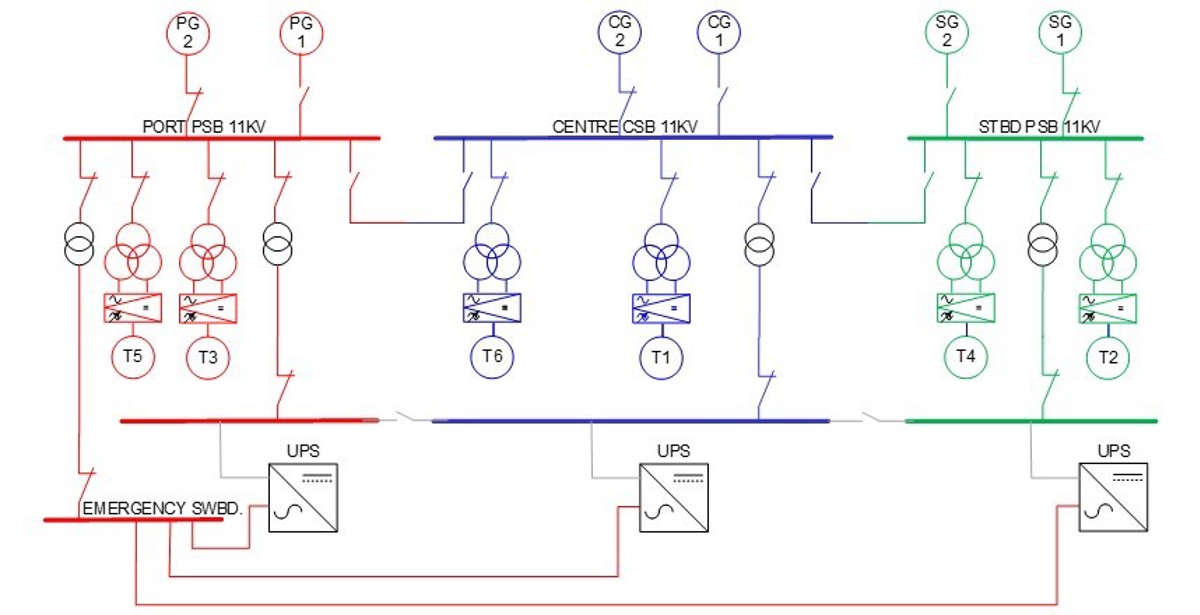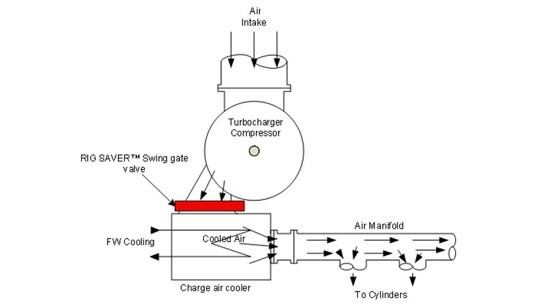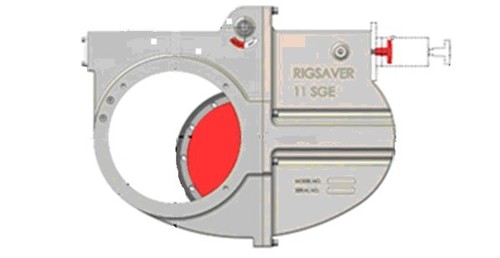Common Power Supplies – Don’t have all your eggs in one basket
- DP Event
- Published on 29 June 2023
- Generated on 26 April 2025
- DPE 02/23
- 3 minute read
Incident
Jump to:
Unexpectedly, all six thrusters stopped functioning and were unavailable to DP Control.
Overview
A vessel was conducting operations while operating in DP Follow Target Mode alongside a pipelayer.
Unexpectedly, all six thrusters stopped functioning and were unavailable to DP Control. The vessel began to drift towards the pipelayer; however, after some time, two thrusters were activated in manual control and the vessel was able to avoid the pipelayer and manoeuvre into a safe position.
The vessel eventually was able to recover all thrusters and return to DP Control.
The switchboard was configured as a three-way split with one generator connected to each section, each section supplied power to two thrusters.

Causes
The underlying cause was the unintended closure of one of two rigsavers on one of the connected bus sections, which resulted in a loss of power and a reduction in speed on one engine, resulting in a decrease in frequency on the affected bus. In this instance, the affected bus supplied power to the emergency switchboard, which consequently experienced a reduction in frequency. During this time, the standby generator for the affected bus attempted to start and connect, but could not, due to the low frequency of the bus.
The three 440Vac switchboard UPS’s were supplied from the emergency switchboard; upon detecting the low frequency, these units sounded alarms on Inverter failure, triggering multiple communication alarms and causing the thrusters to de-select from DP Control and shut down.
Finally, the affected generator tripped and locked out, initiating a blackout recovery on the affected bus; with normalised frequency levels, all thrusters were able to be recovered back into DP Control.
Note: RIG SAVER
The RIG SAVER™ is a swing-gate, spring-operated, air-to-close, shut-off device mounted in the air intake system of the generator engine.
The device uses stored energy by way of a spring to physically move the swing-gate into a closed position. Once the swing-gate is in the closed position it will latch.
The RIG SAVER™ can only be reset (opened) locally with a 19mm wrench.
Once activated it will impede the airflow into the cylinders and positively stop the engine. The RIG SAVER™ can be remotely operated (in this case using the engine start air) and/or locally by a pull toggle.


Figure three – Photo of RIG SAVER™
Conclusion
- A common failure caused the failure of all thrusters.
- Question: what is the normal operating configuration for the UPS’s?
- Should the Standard Operating Procedures (SOP) be that each UPS is fed by the individual LV switchboards? The feeder to the UPS from the emergency switchboard should only kick in during full black out, to keep the batteries charged.
Additional comments
- Do not supply all your UPS units from the same switchboard, even if it is the Emergency Switchboard (ESB). This is a potential fault propagation path, and other types of voltage failures (such as over-voltage) could potentially be transferred as well.
- All ESB UPS unit power supply should have been identified as a concern in the FMEA and rectified accordingly during build and commissioning.
Latest DP incidents
-
Thorough preparation is key
With 4 of 8 diesel generators running and connected to a closed ring bus, and 7 of the 8 thrusters selected to DP, a DP equipment class 3 MODU was set up in Green mode whilst on standby.
DPE 03/24
5 November 2024
Incident
-
There – but not really there
This DP event occurred on a DP equipment class two supply vessel whilst carrying out cargo operations on the starboard side alongside the asset and working at the lee side in the drift-off position.
DPE 03/24
5 November 2024
Incident
-
Equipment Class 3, even if you operate as 'Class 2'
This case study examines a DP incident on an equipment class 3 multi-purpose vessel while operating in good conditions.
DPE 03/24
5 November 2024
Incident
-
Line of sight
This case study covers events onboard a DP equipment class 2 vessel whilst holding position in a turbine field, with three position reference systems selected into DP – DGPS, HPR and Fanbeam.
DPE 03/24
5 November 2024
Incident
-
DP Drill Scenario
DP emergency drill scenarios are included to assist DP vessel management, DPOs / Engineers, and ETOs in conducting DP drills onboard.
DPE 03/24
5 November 2024
Incident
The case studies and observations above have been compiled from information received by IMCA. All vessel, client, and operational data has been removed from the narrative to ensure anonymity. Case studies are not intended as guidance on the safe conduct of operations, but rather to assist vessel managers, DP operators, and technical crew.
IMCA makes every effort to ensure both the accuracy and reliability of the information, but it is not liable for any guidance and/or recommendation and/or statement herein contained.
Any queries should be directed to DP team at IMCA. Share your DP incidents with IMCA online. Sign-up to receive DP event bulletins straight to your email.